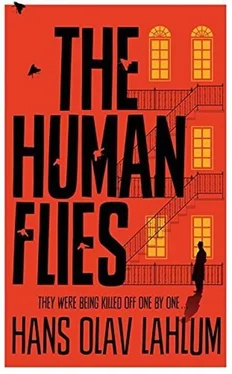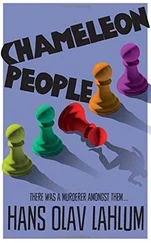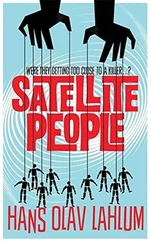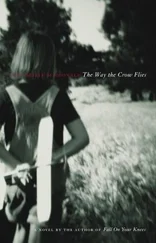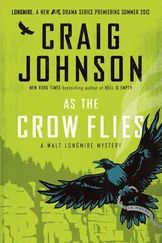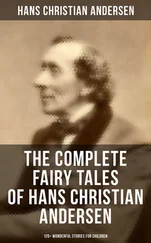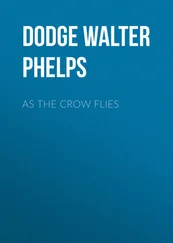‘The refugee who came with Deerfoot and Harald Olesen in 1942 – do you know where we might find him?’
Hans Andersson gave an apologetic shake of the head.
‘He was the son of an Austrian refugee and was called Helmut Schmidt. He lived in Vienna the last time I heard from him, but I doubt there is much to be gained there. Helmut was not with them that night, and when he came here after the war, he did not know what Deerfoot was really called, or where to find him. Helmut would gladly have travelled to the ends of the earth to give him more than a token of his gratitude, he said. He would never forget that cold and pitch-black night when Deerfoot miraculously guided him safely over the mountains to freedom. They had set off together after he had been dropped by a car on a country road near Elverum. Deerfoot had appeared on his own, out of nowhere, on skis. It was impossible to say where he came from.’
I cursed silently. This Deerfoot really was frustratingly good not only at showing the way, but also at covering his own tracks.
Hans Andersson and I stood without saying anything for some minutes, looking up at the snowy mountainside in silent understanding. We were no doubt both thinking that the strange story of the young Deerfoot’s war efforts was in some way of great significance to the murder of Harald Olesen, but it was not easy to fathom how. Whether Deerfoot was still alive twenty-four years later or not, and where in the world he might be, remained an unsolved mystery. I had at last caught a glimpse of this mysterious figure here in Sälen, only to lose sight of him again. Deerfoot had, light-footed as ever, gone back up the snowy mountainside one freezing-cold day in 1944 and all trace of him stopped there.
Hans Andersson and I exchanged looks. He understood what I was thinking and pointed up to the mountain pass.
‘Deerfoot followed some way behind Harald Olesen when they set off for the mountains again that morning. I stood here with my binoculars and watched him disappear over the pass. I have no idea what happened to him after that, but I still wonder every year when I stand here and see the first signs of spring.’
I promised to let him know if I found out any more about Deerfoot, and then asked what had happened to Sara Sundqvist afterwards.
‘That too is a sad story, though of course it was a wonder that her life had been saved. She was the sweetest little girl and played happily here on the floor with my son for several weeks. My wife and I often talked of adopting her, but that did not happen in the end. From the information that Harald Olesen gave about her parents, it was clear that they not only were refugees, but also Jews. When he heard this, my father-in-law was beside himself. So we gave up the idea of keeping the little girl and sent her to the adoption agency in Gothenburg. Which caused us great pain. For many years we had no idea what had happened to little Sara. But apparently she was taken in by good people, and despite such a difficult start in life, things are going well for her now.’
I suddenly felt the icy claws of suspicion grip my heart and asked perhaps a little too quickly how he could know that, and this time his answer was short and swift.
‘Because she came here and I told her the story too. It must have been a couple of years ago now. It was apparently the first time she had heard her parents’ names and been told how she came to be adopted in Gothenburg. She was naturally very interested in Harald Olesen, and even more so in Deerfoot.’
He realized that something was amiss and shot me a questioning look.
‘I called the head office to check before I told her anything. But they were of the same opinion as me: that she had a right to know what we knew of her story. It was all such a long time ago, and did not involve anything criminal, certainly not here in Sweden.’
I found it hard to disagree, but that did not prevent me from feeling a surge of anger and disquiet. Sara Sundqvist had lied to me again – and this time the discovery did not put her in a good light at all.
I said that he had done the right thing, to help put his mind at rest. Then I asked without further ado if I could borrow his office to make an important phone call to Oslo.
As I dialled the number, I imagined Patricia sitting alone waiting by the phone in the White House. As expected, she answered on the second ring, and listened with bated breath to my short version of Hans Andersson’s story. To my slight annoyance, she guessed that the child was inside Deerfoot’s anorak long before he had made it down from the mountain, even though he took considerably less time in my version than in Hans Andersson’s. Nor did the news that Sara Sundqvist had beaten us to it and already been here seem to come as a great surprise.
The line was quiet for a moment when I finished the story. Then Patricia was off again.
‘Congratulations on making such good progress in the investigation. So Deerfoot was a child soldier with severe mood swings during the war, who was probably left scarred by memories and had a deep hatred for Harald Olesen. An undeniably strong starting point. But we still must not take it as given that he is the murderer. I really only have one question for Hans Andersson. Did he ever see what kind of gun Deerfoot and Harald Olesen had with them?’
I should of course have remembered to ask that myself. I put the receiver down on the desk and stuck my head round the door into the side room to ask Hans Andersson the question. Barely a minute later, I was back on the line.
‘No. He always assumed that at least Harald Olesen was armed, and possibly also Deerfoot, but he never saw any guns and never asked about them either. So we do not know whether they were armed or not, and if they were, with what.’
Patricia’s sigh could be heard all the way from Oslo.
‘Of course they were armed. It is extremely unusual to win in a shootout with three German soldiers without having a gun yourself. As Hans Andersson never saw any guns, it would be fair to say that they had handguns of some sort or another. But the million-dollar question is what kind of revolver or pistol they had. If Hans Andersson had known, you might have been able to arrest the murderer this evening. But now there are several real possibilities, even though one seems to be the most likely. There will be overtime for us tonight, but I hope I can encourage you with the prospect of an arrest tomorrow. Come here as soon as you get back to Oslo and I will ask Benedikte to prepare a simple supper. Eight o’clock should be doable?’
I said that I thought so and we put the phone down at the same time. I thanked Hans Andersson for all his help and promised to keep him updated on any developments, then hurried out to the car.
Crossing the border back into Norway was just as unproblematic as it had been going out, but I was still very perplexed. It was clear that Sara Sundqvist would have difficulties explaining herself. She now had a much clearer revenge motive, given that she knew that Harald Olesen had been present when her parents died, though it remained unclear whether he was responsible for this or not. I was buoyed by the fact that Patricia was clearly still working with several alternatives, which included the persistently mysterious Deerfoot as a possible murderer.
That Deerfoot could be the man in the blue raincoat was an obvious possibility. However, it seemed to me that we were still a long way from arresting anyone. Deerfoot’s identity and abode today were still unknown, as it was now absolutely clear that it could not be Darrell Williams. The positive side of this was that I could relax, as the danger of a public scandal and new confrontation with the American Embassy had as good as evaporated.
Читать дальше
